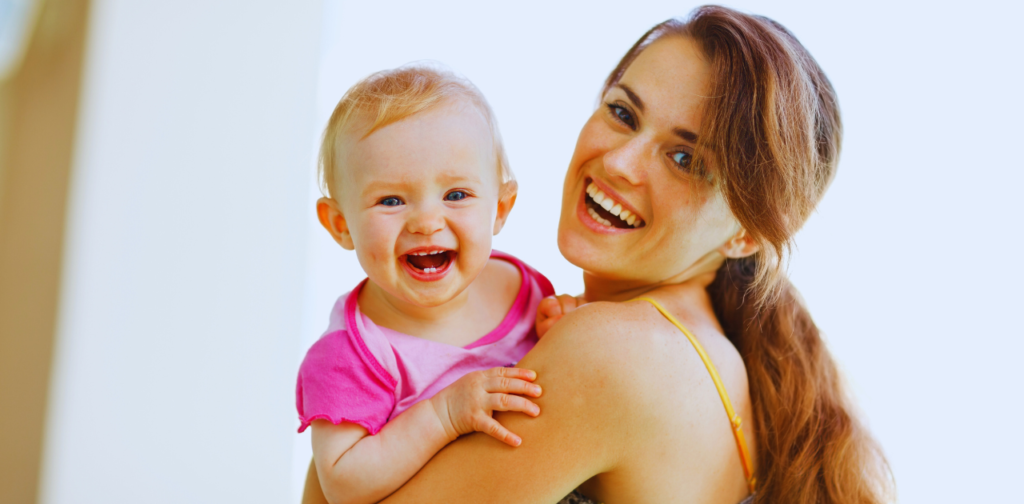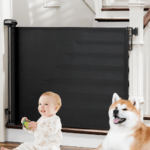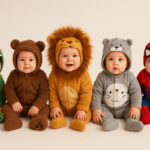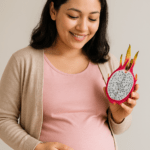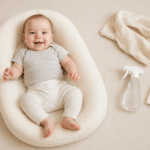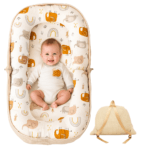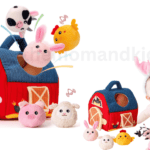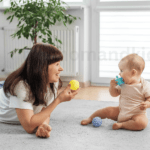Laughter is one of the most joyous and heartwarming sounds, especially when it comes from babies. But have you ever wondered just how many times a baby laughs each day? The answer may surprise you. Babies can laugh up to 300 times a day, turning the simplest moments into bursts of joy. From their first giggles to uncontrollable belly laughs, baby laughter is not only delightful but also vital for their development. Laughter helps strengthen social connections, stimulates cognitive growth, and even boosts the immune system. As babies interact with their surroundings, their sense of humor begins to form, showing us that laughter is a natural part of being human.
In this article, we’ll explore the science behind baby laughter, how often babies laugh, and why these joyful moments are so important to their physical and emotional well-being.
About Baby Laugh

Baby laughter is among the most joyful and heartwarming sounds, often signaling a baby’s happiness and comfort. Babies begin to laugh around 3 to 4 months old, usually in response to familiar faces, tickling, or playful sounds. This laughter is not just a delightful milestone; it also plays a crucial role in their development. It helps strengthen social bonds, improves mood, and even stimulates brain activity. Laughter is a way for babies to express emotions and interact with their surroundings, promoting a positive connection with caregivers. As babies grow, their laughter becomes more varied and is influenced by their unique personalities. Encouraging laughter through play, gentle humor, and positive interactions is beneficial for both the baby’s emotional well-being and the overall bonding experience with parents and loved ones.
Read to know more: Why Babies Cry at Night: Could Overheating Be the Cause?
Different Types of Baby Laughter
Babies express their joy through various types of laughter, each signaling different emotions and reactions:
Giggles:
The most common and lighthearted form of laughter, giggles are usually triggered by playful interactions like tickling or funny faces. Giggles are often spontaneous and infectious, reflecting a baby’s delight in simple pleasures.
Belly Laughs:
These hearty, deep laughs are more intense and can occur when a baby finds something exceptionally funny or exciting. Belly laughs are usually accompanied by an enthusiastic reaction, such as flailing arms or kicking legs.
Squeals:
High-pitched, squealing laughter often happens when a baby is extremely excited or surprised. Squeals can be a response to unexpected or novel stimuli, like a new toy or an amusing game.
Chuckles:
Softer than giggles, chuckles are gentle bursts of laughter that can occur when a baby finds something mildly amusing. Chuckles often comes after a baby has been engaged in calm play or is enjoying a relaxed interaction.
Guffaws:
Less common in very young babies but more likely as they grow; guffaws are loud, hearty laughs that may occur in response to particularly funny or engaging situations. They reflect a higher level of social and emotional engagement.
Cackles:
Some babies may produce cackling sounds that are similar to laughing but with a more raspy or uneven quality. This type of laughter can be a sign of intense amusement or excitement.
How Many Times Do Babies Laugh Per Day?

Babies are known for their infectious laughter, and they certainly laugh a lot! On average, babies laugh 300 to 400 times a day. This may seem surprising compared to adults, who typically laugh only around 15 to 20 times daily. The frequency of baby laughter can vary depending on factors like their mood, environment, and interaction with caregivers. Babies often laugh in response to playful interactions, funny faces, or silly sounds, and even simple activities like peek-a-boo can trigger giggles. Laughter is a sign of positive emotions and contributes to a baby’s cognitive, social, and emotional development. It’s a reflection of how babies explore the world and build bonds with those around them. Encouraging laughter not only brings joy to the baby but also strengthens their brain development and helps create strong social connections.
The Health Benefits of Laughter for Babies
Laughter is more than just a sign of happiness for babies; it has several health benefits that contribute to their overall well-being:
- Boosts Immunity: Laughing increases the production of antibodies and activates immune cells, which can help strengthen a baby’s immune system and make them less susceptible to illnesses.
- Reduces Stress: Laughter triggers the release of endorphins, which act as natural stress relievers. For babies, this means lower levels of stress and anxiety, promoting a more relaxed and happy demeanor.
- Enhances Physical Health: Laughing stimulates circulation and improves cardiovascular health. It also helps relax muscles, which can be beneficial for overall physical comfort and development.
- Promotes Social Development: Through laughter, babies learn to engage with others and understand social cues. This interaction supports their emotional and social development, aiding in the formation of healthy relationships.
- Improves Cognitive Function: Laughter stimulates brain activity, which supports cognitive development. Engaging in playful interactions helps enhance learning and memory as babies grow and explore their environment.
- Strengthens Bonding: Shared laughter between a baby and their caregivers fosters a strong emotional bond. This connection is essential for emotional security and a supportive caregiving environment.
What Triggers Laughter in Babies?
Various stimuli trigger laughter in babies, often based on simple, playful interactions. Some common triggers include:
- Funny Faces and Sounds: Babies are easily amused by exaggerated facial expressions, goofy sounds, and unexpected noises like sneezes or laughter from others.
- Physical Play: Tickling, gentle bouncing, or blowing raspberries on their belly often brings infectious giggles.
- Peek-a-Boo: The element of surprise in peek-a-boo games, where something disappears and reappears, is a classic way to make babies laugh.
- Interaction with Loved Ones: Babies often laugh when engaging with familiar people, particularly during affectionate or playful moments with parents and caregivers.
Understanding the Development of Humor in Infants
Humor in infants develops as they grow and begin to understand the world. Initially, laughter is a response to physical sensations and exaggerated behaviors, but as babies mature, their cognitive abilities evolve, and they begin to find amusement in more complex situations. By around 6 months, babies can recognize patterns and may start laughing at unexpected or incongruent outcomes—like a toy falling oddly. The development of humor helps shape their emotional and social understanding, and it continues to grow as they become more aware of their surroundings.
Baby’s First Laugh
One of the most magical moments for parents is hearing their baby’s first laugh. This usually happens between 3 and 4 months, although some babies may giggle a little earlier or later. Before this, babies communicate joy through smiles, often starting at around 6 to 8 weeks. Laughter is a natural progression from these early smiles and is a sign that babies are becoming more socially engaged and aware of their surroundings.
When Do Babies Start Laughing?
Babies typically start laughing between 3 to 4 months of age. This joyful milestone follows their early social smiles, which usually begin around 6 to 8 weeks. As babies become more aware of their environment and engage with those around them, they begin to react with laughter to playful stimuli. This might include things like tickling, funny faces, or silly sounds made by their caregivers. Every baby is different, so while some may start laughing earlier, others might take a little longer. Laughter at this age is an exciting sign of emotional and social development, indicating that babies are starting to enjoy interactions and find certain experiences amusing.
What Causes Those First Giggles?
Playful interactions and simple, joyful stimuli typically trigger the first giggles in babies. Common causes of those early laughs include tickling, where the physical sensation brings about a reflexive giggle, and peek-a-boo games, where the surprise element delights babies. Funny faces and noises caregivers make also often spark those first laughs as babies begin to recognize and respond to exaggerated expressions and sounds. Additionally, physical activities like gentle bouncing or blowing raspberries on their belly can elicit giggles. At this stage, babies are starting to explore the world around them, and these fun, interactive moments bring them feelings of joy and amusement, leading to those adorable first bursts of laughter.
Why Laughter Varies Between Babies
Laughter can differ widely from one baby to another, and several factors contribute to these variations:
- Personality Traits: Just like adults, babies have unique personalities. Some may be naturally more expressive and giggly, while others might be more reserved. A baby’s temperament can significantly influence how often and how easily they laugh.
- Developmental Stages: Babies progress through various stages of development at different rates. Cognitive, emotional, and social growth impact their sense of humour and their reactions to stimuli.
- Sensitivity to Stimuli: Each baby has a different threshold for what they find amusing. Some may laugh at simple, repetitive actions, while others might need more complex or varied stimuli to elicit laughter.
- Parenting Style: Caregivers’ interactions and play styles can affect a baby’s laughter. Engaging, playful, and responsive caregiving often encourages more frequent laughter, while a more subdued approach may result in fewer giggles.
- Cultural and Environmental Influences: Cultural norms and family environments play a role in shaping a baby’s responses. Babies exposed to different humour and interaction styles may laugh differently based on what they are accustomed to.
- Health and Comfort: A baby’s physical well-being can impact its ability to laugh. Discomfort, illness, or even just being tired can affect how much a baby laughs, as it may be less responsive when not feeling its best.
The Role of Parents in Baby Laughter

Parents significantly influence their baby’s laughter through interactive and playful engagement. Here are key points on how parents foster laughter:
- Playful Interactions: Activities like making funny faces, blowing raspberries, or engaging in peek-a-boo games are central to eliciting laughs. These playful interactions create a joyful atmosphere, making babies more likely to giggle in response.
- Emotional Bonding: When parents laugh and smile, babies are often motivated to mimic these expressions. This mutual exchange of laughter strengthens the emotional bond between parent and child, enhancing feelings of security and affection.
- Positive Reinforcement: Regularly engaging in laughter-inducing activities helps babies associate joy with their interactions with their parents. This positive reinforcement encourages them to express happiness more frequently and confidently.
- Social Learning: Through laughter, babies learn about social interactions and emotional responses. Observing and participating in these interactions helps them understand social cues and develop communication skills.
Why Babies Laugh
Babies laugh for a variety of reasons, reflecting their growing awareness of their surroundings and interactions:
- Physical Sensations: Physical experiences like tickling or gentle bouncing can trigger laughter. These sensations are often new and amusing to babies, leading to spontaneous giggles.
- Surprises and Novelty: Babies are delighted by unexpected events or surprises. Games like peek-a-boo, where an object or person suddenly reappears, play on their sense of wonder and can cause laughter.
- Social Interactions: Laughter allows babies to engage socially with caregivers and others. When they see familiar faces making funny expressions or silly sounds, they respond with laughter, which strengthens their social bonds.
- Emotional Responses: Laughter often reflects positive emotional states. As babies experience joy and pleasure from interactions, they express these feelings through giggles and laughs.
- Cognitive Development: Babies begin to find humor in more complex scenarios as their mental abilities develop. They recognize patterns, anticipate outcomes, and enjoy incongruities or playful actions.
Tips and Tricks to Make Your Baby Laugh More Often
Making your baby laugh is a wonderful way to bond and create joyful moments. Here are some effective tips and tricks to encourage more laughter:
- Play Peek-a-Boo: This classic game never gets old. Hide your face with your hands or a cloth and then reveal it with a big smile. The element of surprise and the repetitive nature of the game often make babies giggle.
- Use Funny Faces: Exaggerated expressions, silly faces, or playful sounds can easily amuse babies. Making faces that vary from serious to extremely goofy can elicit laughter.
- Tickle Gently: Lightly tickling your baby’s tummy, feet, or underarms can trigger giggles. Be sure to observe their reaction and stop if they seem uncomfortable.
- Incorporate Sound Effects: Use playful sounds like silly voices, animal noises, or exaggerated “boing” sounds to entertain your baby. They often respond well to new and unusual noises.
- Dance and Sing: Dancing around with your baby while singing their favorite songs or nursery rhymes can be a fun and interactive way to make them laugh.
- Play with Toys: Use toys that make noises, light up, or move in interesting ways. Babies often find these toys fascinating and amusing, leading to more laughter.
- Engage in Interactive Games: Simple games like “This Little Piggy” or blowing raspberries on their belly can be highly entertaining for babies.
- Be Playful: Sometimes, just being silly and playful—such as pretending to “eat” their toes or making funny voices—can bring out those adorable laughs.
FAQ
How many times do babies laugh per day?
Babies typically laugh around 300 times per day, much more frequently than adults. This laughter usually starts at about 3 to 4 months of age and is often triggered by playful interactions, tickling, or familiar faces.
Why is baby laughter important?
Baby laughter plays a crucial role in emotional and social development. It helps strengthen the bond between the baby and caregivers, encourages social interactions, and stimulates brain development.
What makes babies laugh?
Babies laugh at a variety of things, including funny sounds, gentle tickling, peek-a-boo, and seeing familiar faces. Each baby is unique, so their triggers for laughter can vary.
How can I encourage my baby to laugh more?
Engage in playful activities, make funny faces, use gentle tickling, and respond to your baby’s cues. Babies love positive and engaging interactions, which naturally elicit laughter.
Does laughing have any health benefits for babies?
Yes, laughter boosts mood, relieves stress, and can even help with pain relief. It’s a natural way to promote happiness and well-being, supporting overall health and development.
Conclusion
You might wonder, what exactly makes a baby laugh so frequently? Babies laugh in response to stimuli, such as funny faces, tickles, peek-a-boo games, and even the sound of their parents’ voices. Laughter in babies is a developmental milestone, and as they grow, they begin to recognize patterns, find humor in surprises, and enjoy social interactions.
